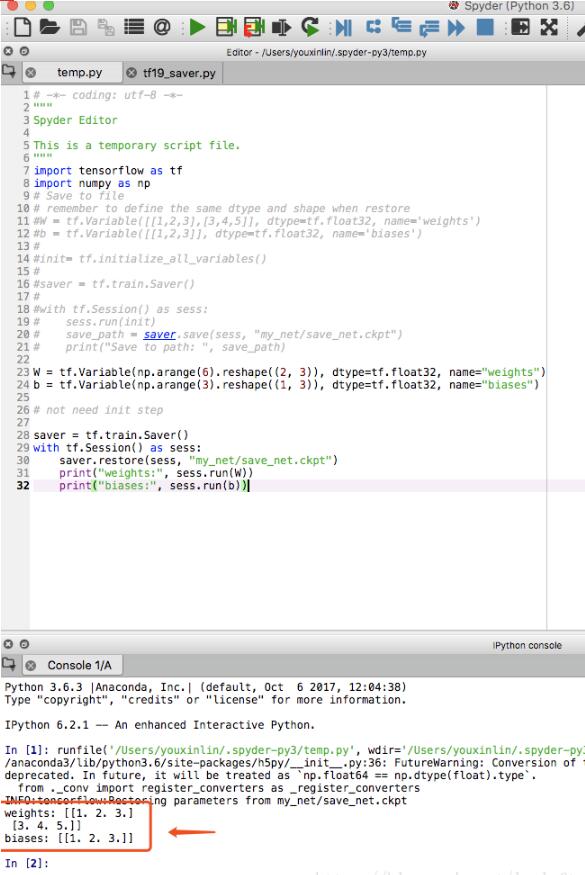在使用TensorFlow的过程中,保存模型参数变量是很重要的一个环节,既可以保证训练过程信息不丢失,也可以帮助我们在需要快速恢复或使用一个模型的时候,利用之前保存好的参数之间
在使用TensorFlow的过程中,保存模型参数变量是很重要的一个环节,既可以保证训练过程信息不丢失,也可以帮助我们在需要快速恢复或使用一个模型的时候,利用之前保存好的参数之间导入,可以节省大量的训练时间。本文通过最简单的例程教大家如何保存和读取.ckpt文件。
一、保存到文件
首先是导入必要的东西:
import tensorflow as tf import numpy as np
随便写几个变量:
# Save to file # remember to define the same dtype and shape when restore W = tf.Variable([[1,2,3],[3,4,5]], dtype=tf.float32, name='weights') b = tf.Variable([[1,2,3]], dtype=tf.float32, name='biases') init= tf.initialize_all_variables()
定义一个saver,来存储我们的各种变量:
saver = tf.train.Saver()
保存的文件用.ckpt后缀:
with tf.Session() as sess:
sess.run(init)
save_path = saver.save(sess, "my_net/save_net.ckpt")
print("Save to path: ", save_path)
上面我们就完成了保存操作。
接下来我们要把之前保存过的变量取出来。
二、取出之前保存的变量
这里要注意,取出时要先开辟一个容器来装,shape和type要和我们之前保存的.ckpt一样。
# restore variables # redefine the same shape and same type for your variables W = tf.Variable(np.arange(6).reshape((2, 3)), dtype=tf.float32, name="weights") b = tf.Variable(np.arange(3).reshape((1, 3)), dtype=tf.float32, name="biases")
restore时,不需要进行init= tf.initialize_all_variables()操作。
利用saver提取文件:
saver = tf.train.Saver()
with tf.Session() as sess:
saver.restore(sess, "my_net/save_net.ckpt")
print("weights:", sess.run(W))
print("biases:", sess.run(b))
结果:

以上这篇TensorFlow Saver:保存和读取模型参数.ckpt实例就是小编分享给大家的全部内容了,希望能给大家一个参考,也希望大家多多支持易盾网络。
